Often in life, you’ll find the most simple answer to a problem is the best one.
Take Suzuki for example. The brand’s problem? It wants to sell cars. The solution? Don’t overthink it. Forget hybrids and dual-clutch transmissions and trick differentials… the core to Suzuki’s success is one which seems to elude other automakers quite easily.
It builds simple and fun-to-drive cars, which can be easily tailored to universally appeal to both developing markets and some of the most advanced and difficult-to-compete-in markets in the world, like ours here in Australia.
The Swift Sport is perhaps the shining example of that. Essentially just a regular budget Swift hatch turned up to 11 with existing parts from other Suzuki vehicles, the Sport has not only managed to outlive many of its rivals, it’s managed to do so in a form which is cheap but not nasty.
With the arrival of the Series II Swift Sport, what’s been added? Stick with us as we explain…
Suzuki Swift 2020: Sport Navi Turbo
| Engine Type | Turbo 4, 1.4L |
|---|---|
| Fuel Type | Premium Unleaded Petrol |
| Fuel Efficiency | 6.1L/100km (combined) |
| Seating | 5 |
| Price From | $16,610 - $21,340 |
| Safety Rating |
|
Does it represent good value for the price? What features does it come with?
8 / 10
In the context of its segment rivals, the Swift Sport is perhaps not cheap, but as the last remaining hot hatch in the segment, it’s very hard to complain about our Swift’s $28,990 MSRP (or $31,990 drive-away) price-tag.
What does hurt, however, is the extra cost of picking an automatic transmission. The manual version is currently $2000 cheaper and, if you can drive one, is a much better car anyway. More on that later.
The Swift Sport’s headline feature is its upgraded drivetrain which puts it miles ahead of other Japanese small car hero models, but other features have not been forgotten.
.jpg)
In the box is an attractive set of 17-inch alloy wheels (wrapped in expensive low-profile Continental Conti Sport tyres in this case…), a 7.0-inch multimedia touchscreen with Apple CarPlay and Android Auto connectivity, built-in sat-nav, LED front lights and DRLs, specific Sport bucket seats for front occupants, a unique cloth interior trim, a D-Shaped leatherbound steering wheel, colour multi-function display in the dash cluster, as well as keyless entry and push-start.
Already amongst the best kit in this small car category (indeed, on par with one of its closest rivals, the Kia Rio GT-Line), the Swift Sport also has a surprisingly formidable active safety suite. Skip down to the safety section for more on that, but suffice to say it’s great for the segment, too.
.jpg)
On the performance front, the Swift Sport also gets its own suspension calibration, a wider track, and a six-speed torque converter auto in this case instead of the normal automatic Swift’s CVT.
The Flame Orange colour this car wears is new for the Series II, and all colours aside from Pure White Pearl carry a $595 premium.
There’s always the argument though, the same money will ultimately buy you a larger more practical hatch or even small SUV from any other brand. So, while you’re not short-changed for gear, you’ll really need to be after this little car’s extra driving engagement to really extract value.
Is there anything interesting about its design?
8 / 10
Does anything quite say ‘fun on a budget’ more than this little car? I think not. The Sport takes the already attractive styling elements of the regular Swift range and gives it a bit of a macho injection with a bigger, angrier grille, wider front bumper, fake (I’d argue unnecessary…) carbon highlight bits, and a cool re-worked rear bumper which integrates its yappy-looking (but oddly, not sounding…) dual exhaust ports. The little Swift’s dimensions go a long way to making those neat 17-inch wheels look huge.
.jpg)
Other little bits bring the styling elements home, too, like the contrast black A-Pillars and roof, rounded out by the hidden rear door handles, and finished by the slightly blue glow of the LED light clusters.
Each change on its own would be minor, but they add up to something which has a lot more visual appeal than the regular Swift and many of its rivals.
.jpg)
Inside is a little less overhauled, with largely the same dash fittings as the rest of the Swift range. The big plus is the bucket seats which do a great job of holding you in place, while not being too tight or firm. There are a few gloss plastic additions strewn about, a new steering wheel which isn’t bad at all, and the colour screen in the dial cluster. That last one has some quaint performance-oriented features. It can show you how many Gs you’re pulling in corners, how much force the brakes are applying, and instantaneous boost, power, and torque gauges.
How practical is the space inside?
6 / 10
There’s no getting around how small the Swift is, but still there’s room for improvement when it comes to storage in its cabin.
While the connectivity offered by the screen is welcome, there is only a single USB 2.0 port with which to charge or connect devices. This is joined by a single auxiliary port and 12v power outlet. There’s no fancy wireless charging or USB-C in the Swift range.
Annoyingly, there’s also not much in the way of storage for such loose objects. You get two cupholders under the climate controls, and a small shelf, but that’s really about it. The glovebox and door bins are also quite shallow, but the addition of a small bottle holder in each is welcome.
.jpg)
Thankfully, the Swift can be fitted with a centre console box as a dealer-fit option, one which we’d strongly recommend given the lack of storage as-is.
While there's no complaints in terms of the amount of room offered for front passengers thanks to those big seats and relatively high roof, rear passengers are largely forgotten.
The rear seat is really more of a foam bench with next to no contouring, storage is nearly non-existent with tiny bottle holders in the doors, a small binnacle in the centre behind the handbrake, and a single pocket on the back of the passenger seat.
.jpg)
Room also isn’t great for someone as tall as me (182cm) with my knees almost hard up against the front seat in my own driving position and a slightly claustrophobic roofline which my head touches.
The boot is also not one of the Swift’s strong points. With 265 litres on offer, it’s one of the smallest volumes in this class, and our test found the largest (124L) CarsGuide case fit snugly in with room for only a small duffle bag next to it. Overnighters only, then…
.jpg)
The Swift Sport does not have a spare wheel, with only a repair kit under the boot floor.
What are the key stats for the engine and transmission?
9 / 10
Simplicity incarnate, the Swift Sport employs the acclaimed 1.4-litre BoosterJet four-cylinder turbocharged engine from its Vitara SUV sibling.
.jpg)
Power is fantastic for this (usually sub 100kW) segment with 103kW/230Nm on offer. It feels every bit as punchy, too with max torque easily displacing the automatic’s 990kg kerb weight from just 2500rpm.
Unlike the regular automatic Swift, Suzuki made the correct decision to equip the Sport with a much better-feeling six-speed torque converter automatic.
How much fuel does it consume?
8 / 10
In automatic form, the Swift Sport wears an official combined fuel consumption of 6.1L/100km. Seems unachievable for a hot hatch? Surprisingly, no.
I spent my week driving the Swift how it wanted to be driven and was surprised to find the computer reporting just 7.5L/100km at the end of my week. This was extra surprising because on three previous real-world tests in the manual I recorded much closer to 8.0L/100km.
The Swift Sport is only capable of drinking mid-range 95RON unleaded petrol, and it has a tiny 37-litre fuel tank.
Warranty & Safety Rating
What safety equipment is fitted? What safety rating?
9 / 10
Another area where the Swift surprises (and not just at this top-spec Sport price-point) is through its active safety suite.
Included is auto emergency braking with forward collision alert, adaptive cruise control, lane departure warning (but no lane keep assist), something called ‘weaving assist’. The series II as tested here has the addition of blind spot monitoring and rear cross traffic alert.
It’s missing a few smaller items like driver attention alert and traffic sign recognition, but the Sport’s active safety suite is nonetheless excellent for this class.
The Swift Sport also carries a maximum five-star ANCAP safety rating as of 2017, and has the expected passive refinements of x airbags, electronic traction, stability, and brake controls, dual ISOFIX chid seat mounting points and three top-tether points.
What does it cost to own? What warranty is offered?
8 / 10
The Swift is covered by Suzuki’s five-year/unlimited kilometre warranty which is on par with Japanese rivals, bested only by the Kia Rio with its seven year/unlimited kilometre promise.
Also updated is the brand’s capped price servicing program which has the Sport visiting the shop once a year or every 10,000km (much better than six-monthly intervals which the brand used to have). Each visit will cost between $239 and $429 for the first five years, for an average yearly cost of $295. That’s super cheap.
.jpg)
What's it like to drive?
9 / 10
The Swift Sport really lives the ‘fun’ of the Suzuki brand. It’s light and agile, with more than enough power to put a smile on your face.
It’s not at the level of being a track-ready machine like the Ford Fiesta ST, but that’s not really the point of this car. No, the Swift Sport excels at extracting joy out of the corners and straights of your otherwise boring daily commutes. It’s fun to throw around roundabouts, to blast down alleyways, and wrangle through long bends.
.jpg)
Honestly, you’ll probably get more of your money’s worth out of thrashing the Swift Sport on daily commutes than you will coddling a sportier machine in your garage for weeks at a time.
The steering is simple and direct, but owing to this car’s sub 1-tonne kerb weight, the front tyres proved skittish, both under acceleration and cornering.
Understeer is kept partially in check by the firm suspension, but the harsh ride might not be for everyone. Harsh bumps are easily transmitted into the cabin, and the low-profile rubber doesn’t do much to abate road noise, especially at freeway speeds.
.jpg)
The seats are comfortable though, and visibility is great, so the Sport is no less of an excellent little city commuter than the rest of the Swift range. You can park it pretty much anywhere.
Having tested this car multiple times though, I must recommend the manual. The auto, as tested here, is fine. But the manual really brings this little hatch alive, giving you control over every faucet of those little joyful moments I mentioned earlier, so you can extract every little bit out of this car’s simple but brilliant formula.
Don’t get me wrong, I’m glad it has a six-speed torque converter rather than a dreaded CVT but it just felt a little bit more pedestrian than the manual version, even with paddle-shifters… You’ll save two grand by selecting the manual. Worth thinking about.
Verdict
The Swift Sport is a car I can’t get bored of. Even the auto is a fun little car which is great around town, but when the road offers you something more, the Swift is there to extract the best out of it.
The year-on-year improvements for this Series II are welcome too, bolstering an already compelling little package.
Pricing Guides







.jpg)

.jpg)

.jpg)
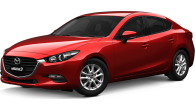
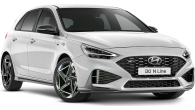
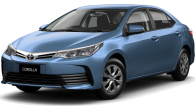
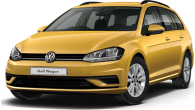
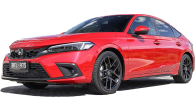







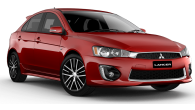




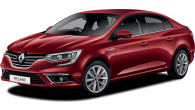
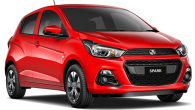
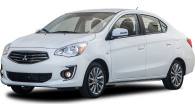






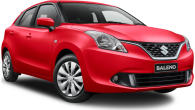





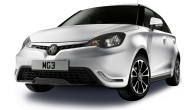


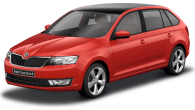

.jpg)
.jpg)
.jpg)

.jpg)
